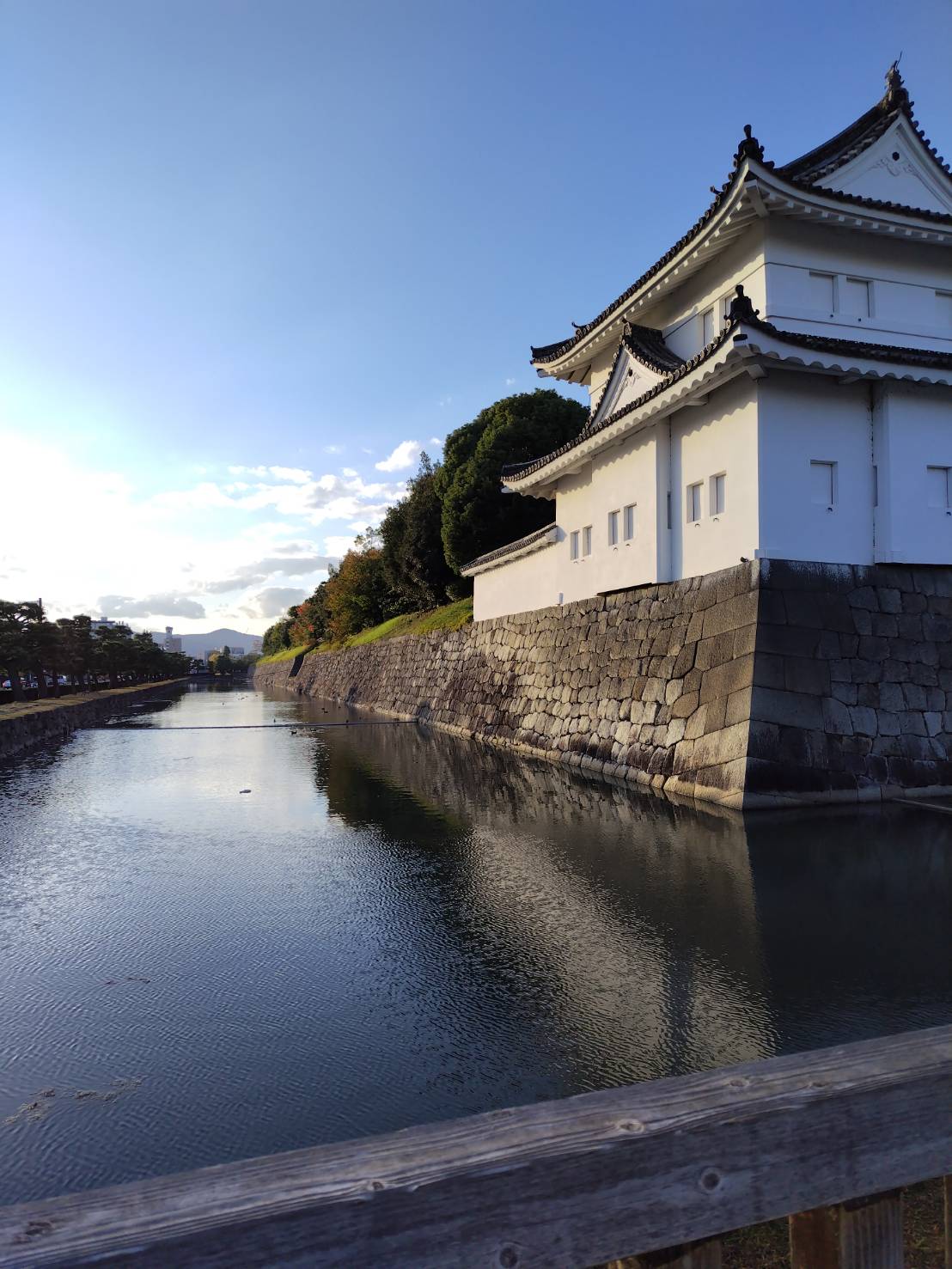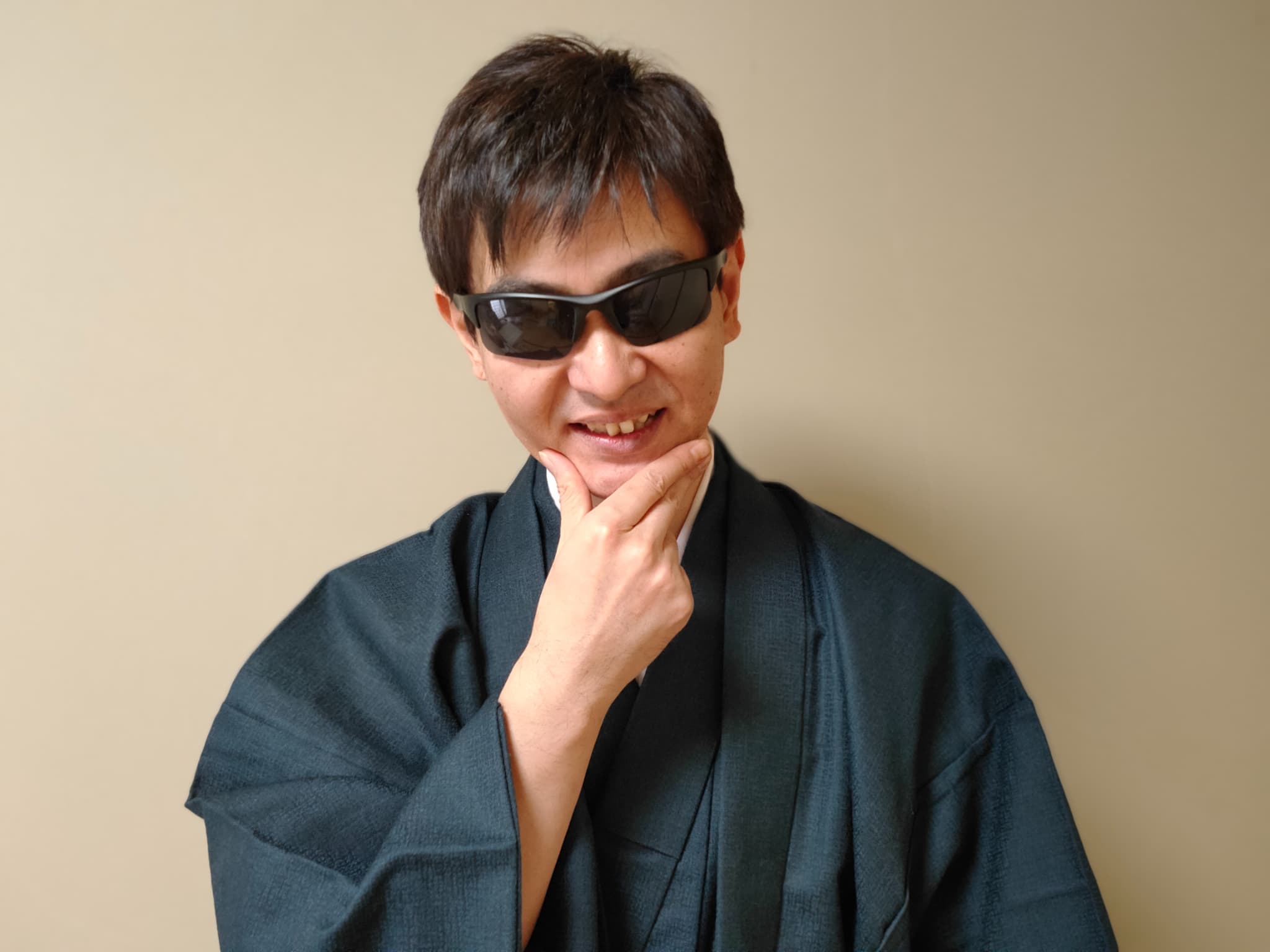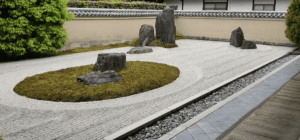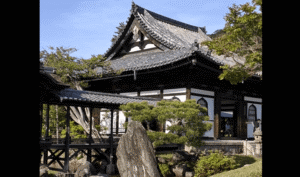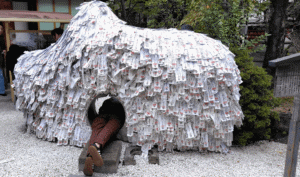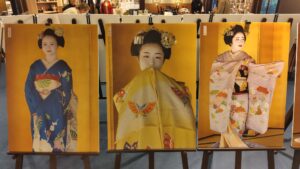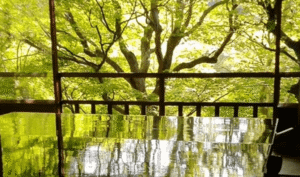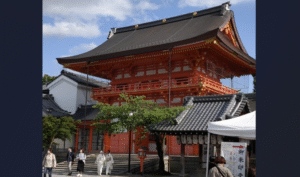Nijo-jo Castle, located in the heart of Kyoto, was commissioned by Tokugawa Ieyasu in 1603 as a symbol of the Tokugawa shogunate’s power and authority. Serving as a political center during the Edo period, the castle is renowned for its impressive architecture, beautiful gardens, and rich historical significance. In 1994, it was designated as a UNESCO World Heritage Site as part of the “Historic Monuments of Ancient Kyoto,” attracting millions of visitors from around the world each year.
Unlike the typical military castles of the Sengoku period, Nijo-jo was built not only for defense but also to showcase the political stability and cultural sophistication of the Tokugawa regime. The castle complex features sturdy stone walls, massive gates, and watchtowers designed for protection, while its interior reveals lavishly decorated rooms and halls. One of its most famous features is the “nightingale floors,” which chirp when walked upon to alert occupants of potential intruders.
Nijo-jo Castle also holds a special place in Japanese history as the site of the 1867 “Taisei Hokan” — the return of political power from the shogunate back to the emperor, marking the beginning of the Meiji Restoration and the modernization of Japan.
Understanding this background helps to appreciate the castle’s significance, and in the following sections, we will explore its main attractions and how to best experience a visit to Nijo-jo Castle.
Each year, countless Japanese elementary school students from across the country visit this castle to learn about the powerful Tokugawa family and the castle’s vital role in Japan’s history. It offers a unique chance to step back in time and explore a place that shaped centuries of Japanese culture and politics.
We invite you to experience this remarkable castle—arguably one of Japan’s most famous and historically significant landmarks. Don’t miss the opportunity to walk through its stunning grounds and discover the stories behind its walls.
Historical Significance
Nijo-jo Castle symbolizes the power and authority of the Tokugawa shogunate, which ruled Japan for over 260 years. It is famously known as the site where Tokugawa Yoshinobu declared the return of political power to the emperor in 1867, an event known as the Taisei Hokan. This moment marked the end of the Edo period and the beginning of the Meiji Restoration.
Book the lowest-priced Shinkansen, hotels, and rental cars directly from trusted Japanese booking sites!
Discover why the world is obsessed with Japanese digital manga — start reading now!
UNESCO World Heritage Designation
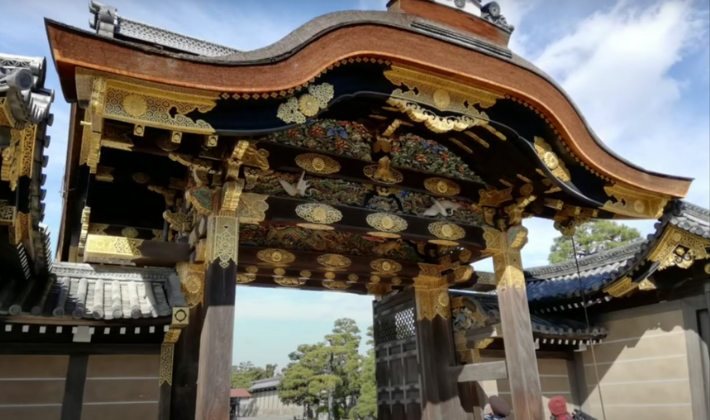
In 1994, Nijo-jo Castle was registered as part of the “Historic Monuments of Ancient Kyoto.” It was recognized for its exceptional castle-palace architecture, well-preserved decorative art, and significant role in Japan’s political history during the Edo period.
History of Nijo-jo Castle
The castle was commissioned by Tokugawa Ieyasu in 1603 to assert shogunate authority in Kyoto and serve as an official residence during imperial visits. The Ninomaru Palace was completed first, followed by expansions under Tokugawa Iemitsu, who added the Honmaru Palace and reinforced defensive structures.
Nijo-jo’s most pivotal event was the 1867 Taisei Hokan, when Tokugawa Yoshinobu announced the restoration of imperial rule from the Ninomaru Palace’s Ohiroma (Grand Audience Hall).
Architectural Highlights
Ninomaru Palace
The Ninomaru Palace is the castle’s centerpiece, a masterpiece of shoin-zukuri (samurai residential architecture). It features beautifully painted sliding doors (fusuma) by the Kano school, intricate wood carvings, and the famous “nightingale floors” (uguisu-bari) that chirp as a security measure. The Kara-mon gate, a National Treasure, is adorned with elaborate carvings and gold leaf.
A standout feature is the “nightingale floors” (uguisu-bari), wooden floors engineered to chirp when walked upon. This clever security measure helped protect the shogun from surprise attacks and remains a fascinating experience for visitors today.
Honmaru Palace and Gardens
The original Honmaru Palace was destroyed by fire in the 18th century. The current Honmaru Palace building was relocated during the Meiji period from another imperial villa, preserving the site’s importance. The Honmaru area is surrounded by spacious gardens and stone walls, offering panoramic views of the castle grounds and Kyoto city.
Defensive Structures
Nijo-jo Castle’s design includes multiple moats, stone walls, and fortified gates to prevent attacks. Corner watchtowers (yagura) stand at strategic points, providing both defense and visual grandeur.
Book the lowest-priced hotels, and rental kimono directly from trusted Japanese booking sites!
Discover why the world is obsessed with Japanese digital manga — start reading now!
Gardens and Seasonal Beauty
Ninomaru Garden
Designed by famed tea master and landscape architect Kobori Enshu, Ninomaru Garden exemplifies shoin-zukuri style landscaping. It features carefully arranged rocks, a central pond with islands, and pine trees framing the palace.
Cherry Blossoms and Autumn Foliage
Nijo-jo Castle is renowned for its seasonal beauty. In spring, over 400 cherry trees, including weeping cherry and Yoshino varieties, bloom across the castle grounds, especially in the Ninomaru and Seiryu-en Gardens. Autumn brings vibrant maple colors, enhancing the castle’s picturesque scenery.
Visiting Information
Opening Hours and Admission
The castle is generally open from 8:45 AM to 5:00 PM (last admission at 4:00 PM), though hours may vary for special events or seasonal illuminations. Admission is approximately 1,300 yen for adults, with additional fees for certain exhibitions. It is current as of August 2025 and may change in the future.
Access from Kyoto Station
From Kyoto Station, take the Karasuma Subway Line to Karasuma-Oike Station, transfer to the Tozai Line, and get off at Nijojo-mae Station, right in front of the castle. Alternatively, city buses from Kyoto Station also stop nearby.
From Kyoto Station, take Bus 9 to Nijo-jo-mae stop. From there, it’s about a 3-minute walk.
Facilities and Services
English pamphlets, audio guides, and guided tours are available. The site is partially wheelchair-accessible and has a souvenir shop selling local crafts and castle-themed items.

